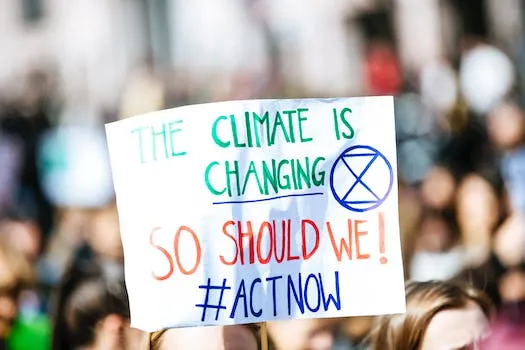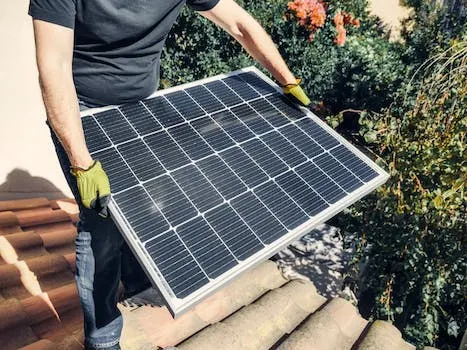
Is Investing in Carbon Offset Credits Really Sustainable?
Investing in carbon offset credits is a popular way for individuals and businesses to reduce their carbon footprint and make a positive contribution to the environment. But is it really sustainable? In this article, we will explore the potential environmental dangers of investing in carbon offset credits, and discuss whether or not this tool is truly beneficial for the environment.
Carbon offsets are permits that allow the owner to emit a certain amount of carbon dioxide or other greenhouse gases. They are purchased by companies or people who want to reduce their global emissions, with funds directed towards projects that help achieve this goal. Carbon offsetting can be seen as an effective way to channel funds into conservation and sustainable development while reducing climate emissions; however, if done incorrectly it could have negative consequences on the environment.
The concept of buying carbon offsets involves obtaining an equal number of credits as one’s residual emissions from activities such as burning fossil fuels. These credits can then be used to finance environmental projects around the world which aim at reducing GHG emissions or sequestering them from entering into atmosphere. By doing so, individuals and companies can balance out their own contributions towards climate change while supporting green initiatives globally.
In conclusion, investing in Carbon offset credits may seem like a viable solution for reducing one’s own impact on climate change; however there are still some risks associated with it that need further exploration before making any decisions about its sustainability benefits.
What Are Carbon Offset Credits?
Carbon offset credits are a way for individuals and companies to reduce their carbon emissions. These credits, also known as carbon offsets, are permits that allow the owner to emit a certain amount of carbon dioxide or other greenhouse gases. In exchange for money, organizations can purchase these credits which are generated by projects that reduce or avoid greenhouse gas emissions. The main feature of this platform is to display UNFCCC-certified climate friendly projects that reduce, avoid or remove greenhouse gas emissions from the atmosphere. Carbon offsets occur when a polluting company buys a carbon credit to make up for the greenhouse gas it has emitted and the money should be used to fund renewable energy projects such as wind farms and solar power plants. The trading of carbon credits can help companies meet ambitious net zero targets by neutralizing large chunks of their emissions through buying these offsets. A single carbon offset credit is certified by governments or independent certification bodies and represents an emission reduction of one metric tonne of CO2 equivalent (CO2e). Investing in these credits is an effective way for companies to become more sustainable while helping them reach their net zero goals in an efficient manner.
Are Carbon Offset Credits Really Sustainable?
Carbon offset credits are a great way to reduce one's carbon footprint, but they can also be used to mask the true amount of emissions that are being generated. This can lead to a false sense of sustainability and can even lead to further emissions in the future. Carbon offsetting is a process by which funds are directed to projects that help reduce global emissions. Companies or people often buy carbon offsets, sometimes called carbon credits or climate credits, as a way of paying for others to reduce emissions or absorb CO2 in order compensate for their own emissions. Offsets have become increasingly popular as an easy way for companies and individuals alike to make up for their own environmental impact.
However, there is some debate over whether these Offsets really do anything meaningful when it comes to reducing global emissions. While it is true that planting trees and other projects funded by offsets do help absorb CO2 from the atmosphere, critics argue that these efforts may not be enough on their own and could even be used as an excuse for companies not taking more direct action against climate change. Additionally, there have been reports of fraudulent activities related to carbon offsetting which could undermine its effectiveness altogether.
Ultimately, investing in carbon offset credits may still be beneficial if done responsibly with proper oversight and regulation; however it should not be seen as a substitute for more direct action against climate change such as reducing energy consumption or switching away from fossil fuels entirely. Carbon offsets should instead serve as an additional tool in our fight against global warming rather than the only solution we rely on going forward if we want real progress towards sustainability in the long run.
The Dangers of Carbon Offset Credits
Carbon offset credits are a popular way for companies and governments to reduce their carbon emissions. The idea is that they can purchase credits from projects that reduce emissions, such as planting trees or investing in renewable energy sources, and use them to offset their own emissions. However, there are several issues with this approach that make it less than ideal for reducing emissions. Firstly, the projects generating the credits may not actually lead to real reductions in emissions; instead they may simply shift them from one place to another. Additionally, some of these projects may not be managed sustainably, leading to future emissions that could have been avoided if the project had been managed correctly. Furthermore, many of these projects are not additional or permanent; meaning they would have happened anyway without the purchase of carbon offsets and will only last as long as someone is paying for them. This means that rather than reducing overall global greenhouse gas levels, carbon offsetting can actually make climate change worse by obscuring actual climate-wrecking-emissions.
The Benefits of Carbon Offset Credits
Carbon offset credits are a valuable tool to address climate change, as they provide an incentive for businesses and individuals to reduce their emissions and invest in clean energy projects. Carbon offsets are permits that allow the owner to emit a certain amount of carbon dioxide or other greenhouse gases. Companies can use these credits to earn extra PR credit and achieve a more measurable reduction in carbon emissions. Every offset project has the potential to avoid emissions or remove carbon from the atmosphere, but it is important that registries answer questions about how much GHG is being avoided or removed before they can be used as 'offsets'. The money from these credits should be used for projects that will actually reduce GHG emissions, rather than just providing funding for projects that would have happened anyway. When done correctly, carbon offset credits can lead to real reductions in emissions and help combat climate change on a global scale.
Conclusion
In conclusion, carbon offset credits can be a powerful tool to reduce emissions and invest in clean energy projects. However, it is important to be aware of the potential dangers of investing in carbon offset credits. Carbon offsets have an important dual role to play in the battle against climate change; they can channel funds to conservation and sustainable development while reducing climate emissions. Carbon credits are measurable, verifiable emission reductions from certified climate action projects that reduce, remove or avoid greenhouse gas (GHG) emissions. It is essential for individuals and businesses alike to understand the risks and benefits associated with carbon offset credits before making any decisions about how best to reduce their own carbon footprint in a sustainable way.










